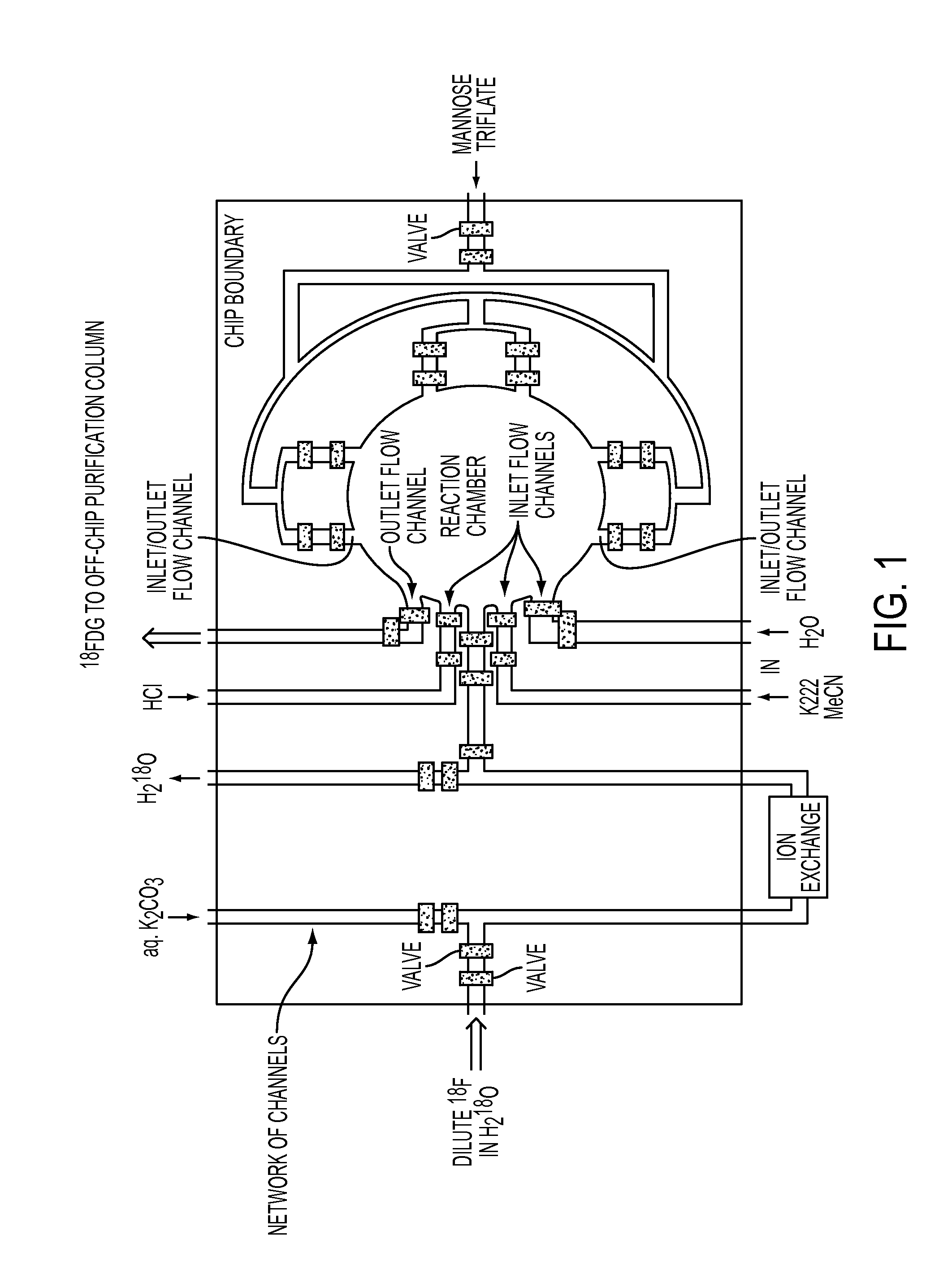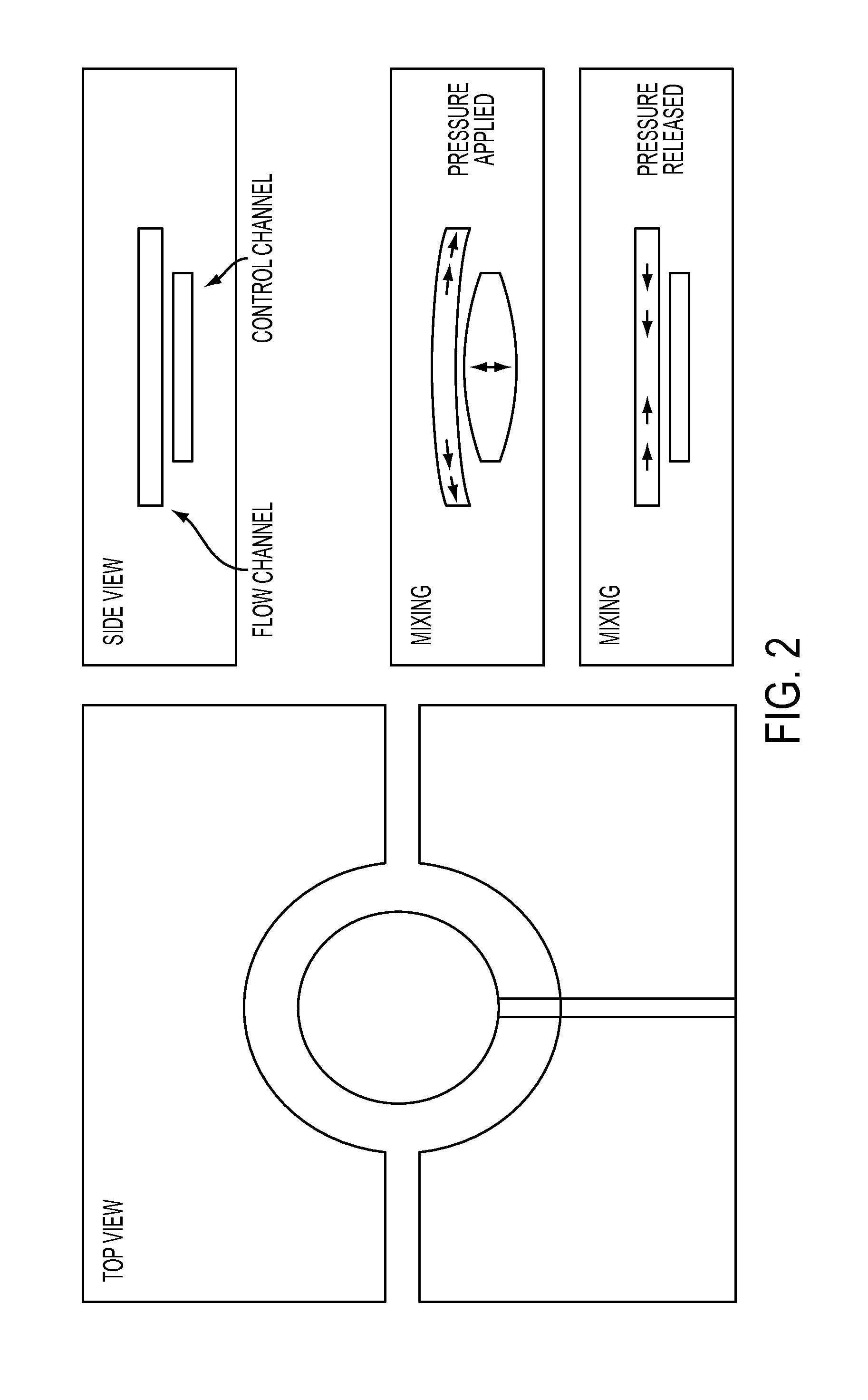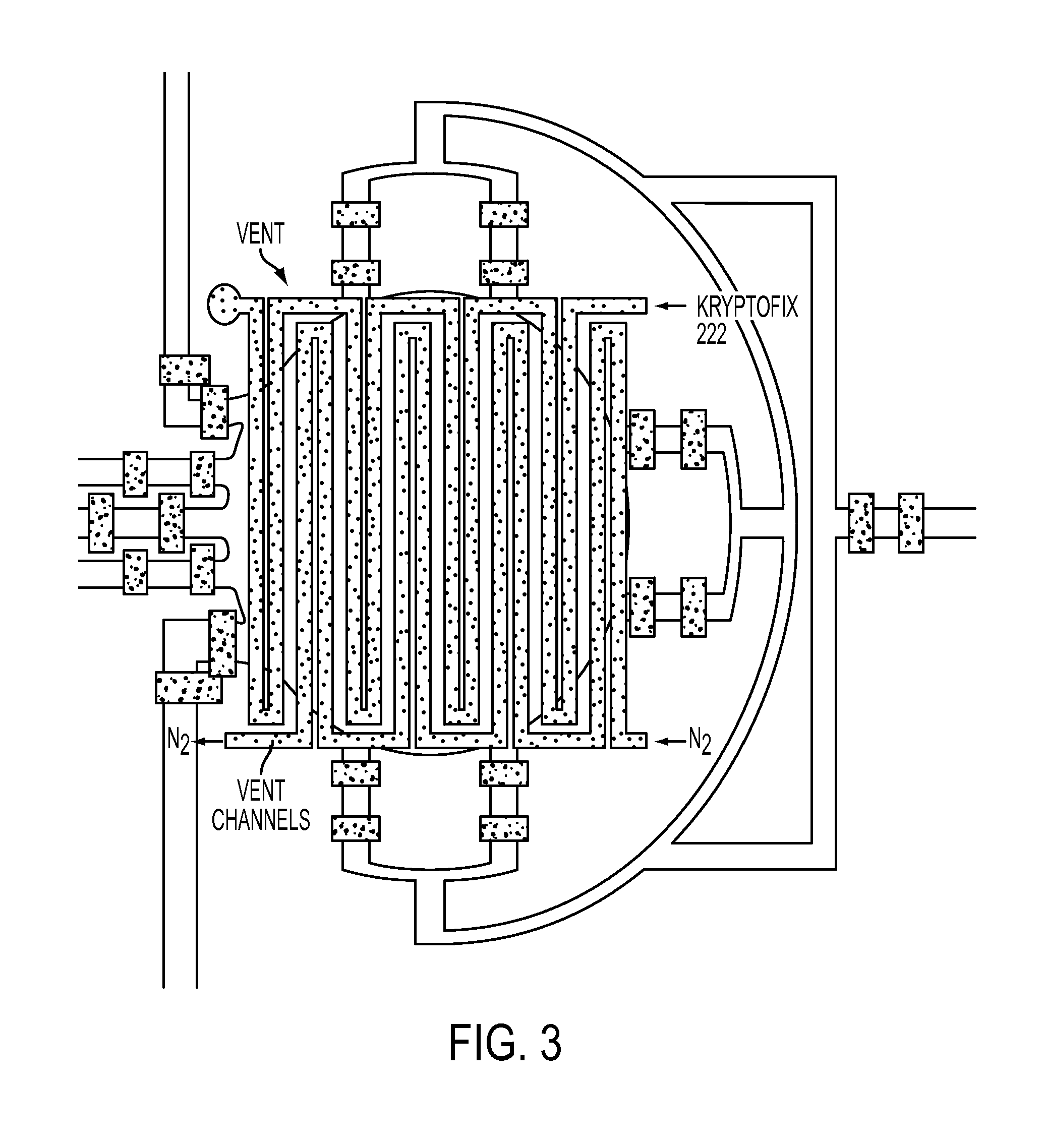Microfluidic Chip Capable of Synthesizing Radioactively Labeled Molecules on a Scale Suitable for Human Imaging With Positron Emission Tomography
a radioactive labeled molecule and microfluidic chip technology, applied in nuclear engineering, nuclear elements, transportation and packaging, etc., can solve the problems of difficult modification of modules and reactors for the research and development of new compounds and probes, large space occupation of modules or reactors, and long reaction time cycles of chemical processes. achieve the effect of faster and more efficien
- Summary
- Abstract
- Description
- Claims
- Application Information
AI Technical Summary
Benefits of technology
Problems solved by technology
Method used
Image
Examples
Embodiment Construction
[0033]Compared to known or commercial microfluidic chips, the microfluidic device of the present application comprises of a number of novel elements and components, and their various combinations. Certain elements and components and non-limiting design configuration of the microfluidic device is illustrated below:
1) Ion Exchange Column:
[0034]The current, known FDG chip design presents a number of scale-up challenges. For example, the currently available FDG chip contains an on-chip ion exchange column that is capable to trapping several orders of magnitude less activity than required for certain applications; that is, about 60 microCi as compared to a target of 300 milliCi. It is unlikely that this scaling issue can be resolved with an on-chip nanoscale columns, since it would require as many as 5,000 parallel columns to trap sufficient amounts of fluoride to meet the desired activity.
[0035]In addition, the processing throughput of the known microfluidic chips is also limited. Curr...
PUM
 Login to View More
Login to View More Abstract
Description
Claims
Application Information
 Login to View More
Login to View More - R&D
- Intellectual Property
- Life Sciences
- Materials
- Tech Scout
- Unparalleled Data Quality
- Higher Quality Content
- 60% Fewer Hallucinations
Browse by: Latest US Patents, China's latest patents, Technical Efficacy Thesaurus, Application Domain, Technology Topic, Popular Technical Reports.
© 2025 PatSnap. All rights reserved.Legal|Privacy policy|Modern Slavery Act Transparency Statement|Sitemap|About US| Contact US: help@patsnap.com



